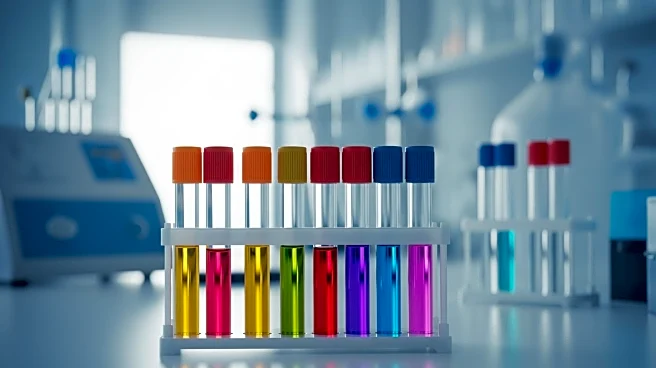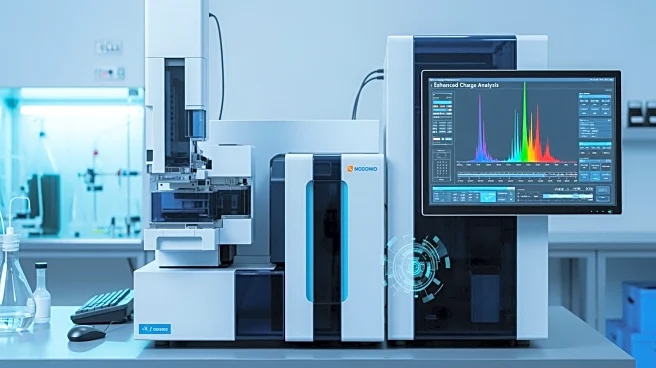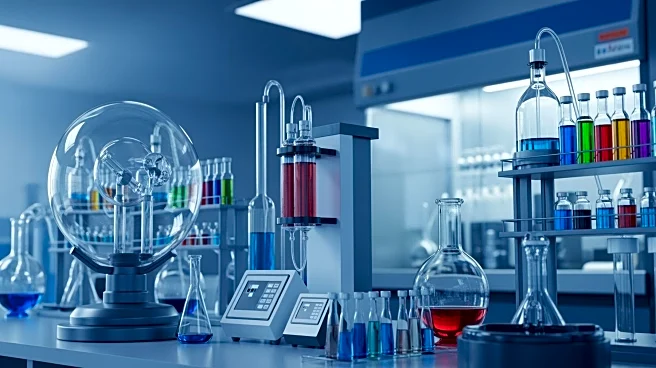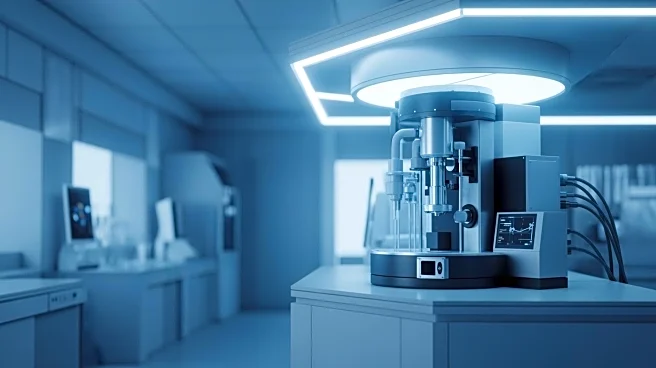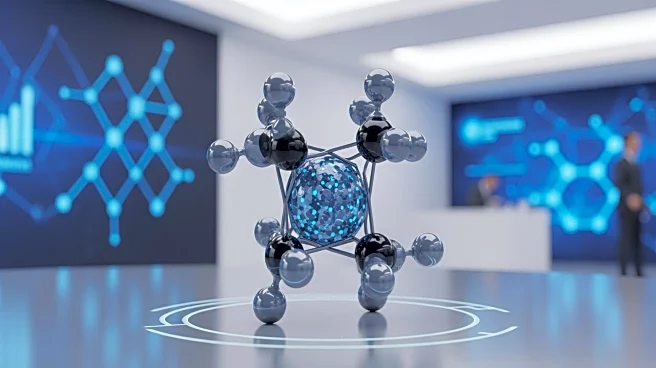What's Happening?
Researchers have developed a harmonized and validated method using imaged capillary isoelectric focusing (icIEF) to evaluate the charge heterogeneity of monoclonal antibodies (mAbs). This new protocol
is aligned with guidelines from the European Pharmacopoeia and the International Council for Harmonization's Technical Requirements for Pharmaceuticals. The method is designed for routine quality control during manufacturing and throughout the lifecycle of mAbs, and it can also help identify counterfeit antibody drugs when reference standards are unavailable. The protocol focuses on the isoelectric point as a key identity parameter, enhancing the accuracy and precision of outcomes. It involves a new assortment and ratio of carrier ampholytes to improve linearity across the mAb-relevant pH gradient, allowing for better separation of antibody variants.
Why It's Important?
The development of this harmonized protocol is significant for the biopharmaceutical industry as it sets a new benchmark for quality control of biopharmaceutical products. By improving the accuracy and precision of charge heterogeneity analysis, the method addresses the growing demand for standardized procedures in the evaluation of mAbs. This advancement could lead to more reliable manufacturing processes and better regulatory compliance, ultimately benefiting manufacturers and regulatory authorities. The ability to identify counterfeit drugs more effectively also enhances the safety and efficacy of biopharmaceutical products available to consumers.
What's Next?
The implementation of this protocol could lead to widespread adoption in the biopharmaceutical industry, influencing both manufacturing practices and regulatory standards. As the method gains recognition, it may prompt further research and development in the field of mAb analysis, potentially leading to additional innovations in biopharmaceutical quality control. Regulatory bodies might consider integrating this protocol into their guidelines, which could standardize practices across the industry and improve the overall quality of biopharmaceutical products.
Beyond the Headlines
This development highlights the importance of international collaboration in setting standards for biopharmaceuticals. The harmonization of guidelines across different regions can facilitate global trade and ensure consistent quality in biopharmaceutical products. Additionally, the focus on charge heterogeneity analysis underscores the complexity of mAb production and the need for precise analytical techniques to ensure product safety and efficacy.
